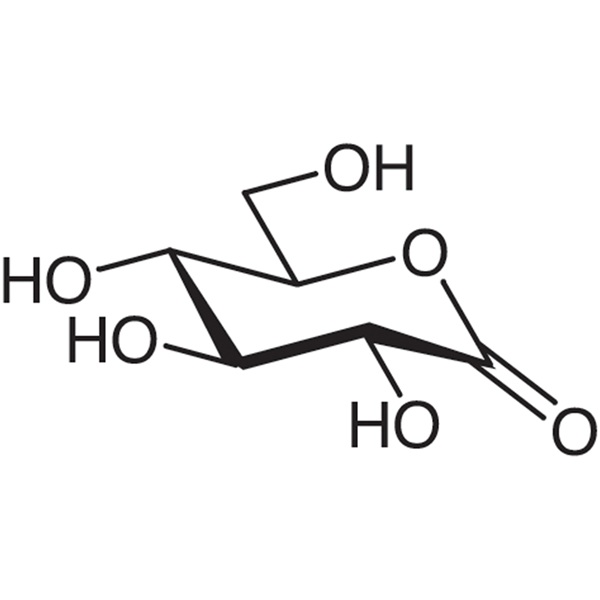Glucono delta-Lactone CAS 90-80-2 Assay 99.0%~100.5% (Titration) Food Additive
Ruifu Chemical is the leading manufacturer of Glucono delta-Lactone (Gluconic Acid δ-Lactone; GDL) (CAS: 90-80-2) with high quality, production capacity 10000 tons per year. Specifications: FCC8, USP36, E575, GB7657-2005. Glucono delta-Lactone is a multi-functional excellent food additive, can be used in the production of tofu and other foods. Ruifu Chemical can provide worldwide delivery, competitive price, excellent service, small and bulk quantities available. Please contact: alvin@ruifuchem.com
| Chemical Name | Glucono delta-Lactone |
| Synonyms | Gluconic Acid δ-Lactone; D-(+)-Glucono-1,5-Lactone; Glucono delta Lactone; delta-Gluconolactone; δ-Gluconolactone; Gluconolactone; Gluconic Acid Lactone; Glucolactone; D-(+)-Gluconic Acid delta-Lactone; D-(+)-Gluconic Acid δ-Lactone; D-(+)-Dextronic Acid δ-Lactone; GDL |
| Stock Status | In Stock, Production Capacity 10000 Tons per Year |
| Specifications | FCC8, USP36, E575, GB7657-2005 |
| CAS Number | 90-80-2 |
| Molecular Formula | C6H10O6 |
| Molecular Weight | 178.14 g/mol |
| Melting Point | 150.0~154.0℃ (Decomposition) |
| Specific Rotation [a]20/D | +60.0° to +67.0° (C=10 in H2O) |
| Store Under Inert Gas | Store Under Inert Gas (e.g. Argon). |
| Sensitive | Light Sensitive, Moisture Sensitive |
| Water Solubility | Soluble in Water |
| COA & MSDS | Available |
| Origin of Product | China |
| Brand | Ruifu Chemical |
| Items | Specifications | Results |
| Appearance | White Crystals Powder | White Crystals Powder |
| Identification (IR) | Conforms to Structure | Conforms |
| Assay / Analysis Method | 99.0%~100.5% (by Titration) | 99.82% |
| Melting Point | 150.0~154.0℃ | 153.1℃ |
| Moisture | ≤0.20% | 0.11% |
| Reducing Substances | ≤0.50% (as D-Glucose) | <0.50% |
| Lead (Pb) | ≤10ppm | <10ppm |
| Heavy Metals | ≤20ppm | <20ppm |
| Arsenic (As) | ≤3ppm | <1ppm |
| Sulphate Ash | ≤0.10% | <0.10% |
| Sulfate (SO4) | ≤0.03% | <0.03% |
| Chlorides (Cl) | ≤0.02% | <0.02% |
| Iron (Fe) | ≤0.001% | <0.001% |
| Conclusion | This product by inspection accords with the standard GB7657-2005/FCC | |
Package: Bottle, 1kg/bag, 10kg/25kg/cardboard drum, or according to customer's requirement.
Storage Condition: Keep the container tightly closed and store in a cool, dry (2~8℃) and well-ventilated warehouse. Keep away from sunshine; avoid fire and heat sources; avoid moisture. Keep awy from strong oxidizing agents, strong bases, sources of ignition.
Shipping: Deliver to worldwide by air, by FedEx / DHL Express. Provide fast and reliable delivery.
How to Purchase? Please contact Dr. Alvin Huang: sales@ruifuchem.com or alvin@ruifuchem.com
15 Years Experience? We have more than 15 years of experience in the manufacture and export of a wide range of high quality pharmaceutical intermediates or fine chemicals.
Main Markets? Sell to domestic market, North America, Europe, India, Korea, Japanese, Australia, etc.
Advantages? Superior quality, affordable price, professional services and technical support, fast delivery.
Quality Assurance? Strict quality control system. Professional equipment for analysis include NMR, LC-MS, GC, HPLC, ICP-MS, UV, IR, OR, K.F, ROI, LOD, MP, Clarity, Solubility, Microbial limit test, etc.
Samples? Most products provide free samples for quality evaluation, shipping cost should be paid by customers.
Factory Audit? Factory audit welcome. Please make an appointment in advance.
MOQ? No MOQ. Small order is acceptable.
Delivery Time? If within stock, three days delivery guaranteed.
Transportation? By Express (FedEx, DHL), by Air, by Sea.
Documents? After sales service: COA, MOA, ROS, MSDS, etc. can be provided.
Custom Synthesis? Can provide custom synthesis services to best fit your research needs.
Payment Terms? Proforma invoice will be sent first after confirmation of order, enclosed our bank information. Payment by T/T (Telex Transfer), PayPal, Western Union, etc.
Risk Codes R21 - Harmful in contact with skin
R36/38 - Irritating to eyes and skin.
R46 - May cause heritable genetic damage
R62 - Possible risk of impaired fertility
R63 - Possible risk of harm to the unborn child
Safety Description S24/25 - Avoid contact with skin and eyes.
S53 - Avoid exposure - obtain special instructions before use.
S36/37 - Wear suitable protective clothing and gloves.
S26 - In case of contact with eyes, rinse immediately with plenty of water and seek medical advice.
S25 - Avoid contact with eyes.
WGK Germany 3
RTECS LZ5184000
FLUKA BRAND F CODES 21
TSCA Yes
HS Code 2932209090
Glucono delta-Lactone (Gluconic Acid δ-Lactone; GDL) (CAS: 90-80-2) is used as food additive, used as a coagulant for tofu. Gluconic Acid δ-Lactone is easily soluble in water, slightly soluble in ethyl alcohol, insoluble in ethyl ether. This product is practically odorless. it has a slightly sweet taste. Non toxic, it will be completely metabolised in the system just like a carbohydrate.
Gluconic Acid δ-Lactone is a multi-functional excellent food additive, mainly used for protein coagulant, acid agent, leavening agent, freshness preservative, flavoring agent, chelating agent, color, pH reducing agent, and preservative agent.
Gluconic Acid δ-Lactone can be used appropriately in various foods according to production needs. Gluconic Acid δ-Lactone is refined by starch fermentation, non-toxic and harmless to human body. The United States FDA has been approved as a non-toxic food additives.
1. Tofu coagulant. Gluconic Acid δ-Lactone is white and tender, no bitter taste, no protein loss. In Japan, as a tofu coagulant accounted for 50-70% of the total amount of Japan, with this product to make tofu, pure texture, tender and delicious, and can extend the preservation time.
2. Gelling agent for dairy products. Can also be in the production of yogurt or cheese.
3. Quality improver. Able to be applied in pork luncheon meat and canned pork, to improve the effect of colorant.
4. Acidifying agent. Could be applied in fruit syrup or jelly with flavors as vanilla extract, chocolate, banana, etc.
5. Chelating agent. Widely used in dairy products asand even in beer industry, etc.
The hygienic standard for the use of food additives in China (GB2760-86) stipulates that the maximum amount of use is 3.0g/kg.
Gluconolactone
C6H10O6 178.14
D-Gluconic acid δ-lactone.
Glucono delta-lactone [90-80-2].
» Gluconolactone contains not less than 99.0 percent and not more than 101.0 percent of C6H10O6.
Packaging and storage-Preserve in well-closed containers.
Identification-Dissolve about 0.5 g in 5 mL of warm water in a test tube. Add 1 mL of freshly distilled phenylhydrazine, and heat on a steam bath for 30 minutes. Cool the solution, induce crystallization by scratching the inner surface of the test tube with a glass rod, and collect the crystals of the phenylhydrazide of gluconic acid. Dissolve the crystals in 10 mL of hot water to which a small amount of activated charcoal has been added, filter, recrystallize, wash the crystals with 2 mL of cold water, and dry the crystals at 105 for 1 hour: the crystals so obtained melt between 195 and 200.
Lead <251>-Prepare a Test Preparation as directed in the chapter, and use 10 mL of Diluted Standard Lead Solution (10 µg of lead) for the test: the limit is 0.001%.
Heavy metals <231>-Dissolve 1 g in 25 mL of water: the limit is 0.002%.
Reducing substances-Transfer 10.0 g to a 400-mL beaker, add 40 mL of water, and swirl to dissolve. Add 2 drops of phenolphthalein TS, and neutralize with sodium hydroxide solution (1 in 2). Dilute with water to about 50 mL, and add 50 mL of alkaline cupric tartrate TS. Heat so that the solution begins to boil in 4 minutes, and allow boiling to continue for 120 seconds. Pass the suspension through a medium-porosity filtering crucible, and wash the filter with three 5-mL portions of water. Place the crucible in an upright position in the original beaker, add 5 mL of water and 3 mL of nitric acid to the crucible, mix with a glass rod to ensure complete solution of the cuprous oxide, and wash the solution from the crucible into a beaker with the aid of 5 mL of water. Add bromine TS, usually 5 to 10 mL, until the solution becomes yellow in color, and dilute with water to about 75 mL. Add a few glass beads, boil until the bromine has been driven off, and cool. Slowly add ammonium hydroxide until a deep blue color appears, then adjust with glacial acetic acid to a pH of 4, and add water to make about 100 mL. Add 4 g of potassium iodide, and titrate with 0.1 N sodium thiosulfate VS, adding starch TS just before the endpoint is reached: not more than 16.1 mL of 0.1 N sodium thiosulfate is consumed.
Assay-Dissolve about 600 mg of Gluconolactone, accurately weighed, in 100 mL of water in a 300-mL conical flask, add 50.0 mL of 0.1 N sodium hydroxide VS, and allow to stand for 15 minutes. Add phenolphthalein TS, and titrate the excess alkali with 0.1 N hydrochloric acid VS. Perform a blank determination (see Residual Titrations under Titrimetry 541). Each mL of 0.1 N sodium hydroxide is equivalent to 17.81 mg of C6H10O6.
-
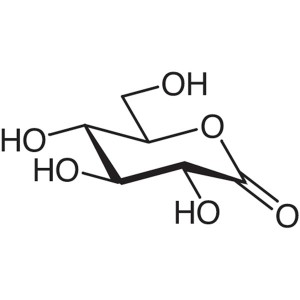
Glucono delta-Lactone CAS 90-80-2 Assay 99.0%~1...
-
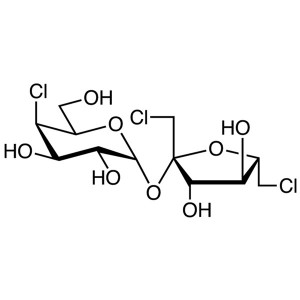
Sucralose CAS 56038-13-2 Assay 98.0~102.0% Factory
-
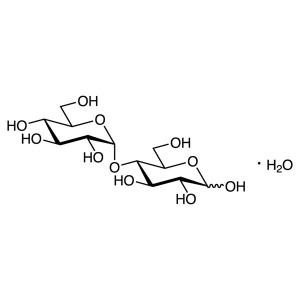
D-(+)-Maltose Monohydrate CAS 6363-53-7 Assay >...
-
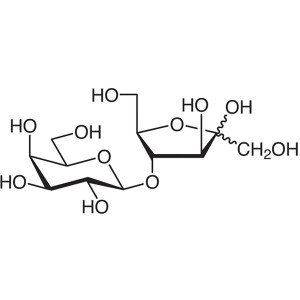
Lactulose CAS 4618-18-2 Assay >98.5% (HPLC)
-
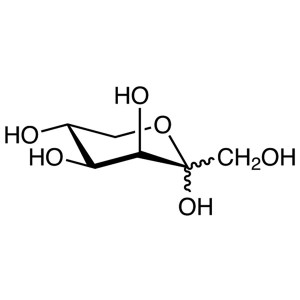
D-Tagatose CAS 87-81-0 Assay >99.0% (HPLC) Factory
-
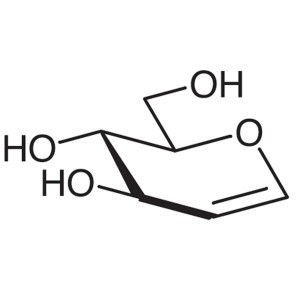
D-Glucal CAS 13265-84-4 Assay >96.0% (HPLC) Fac...
-
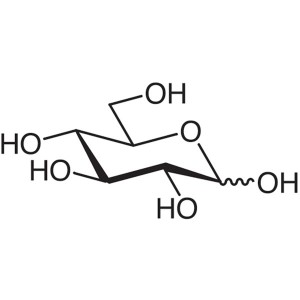
D-(+)-Glucose Anhydrous CAS 50-99-7 Assay ≥99.5...
-
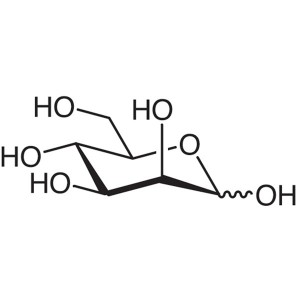
D-(+)-Mannose CAS 3458-28-4 Assay >99.0% (HPLC)...
-
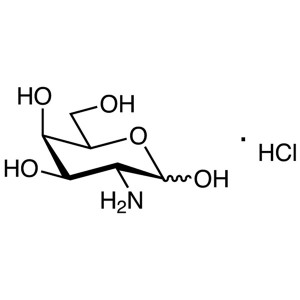
D-(+)-Galactosamine Hydrochloride CAS 1772-03-8...
-
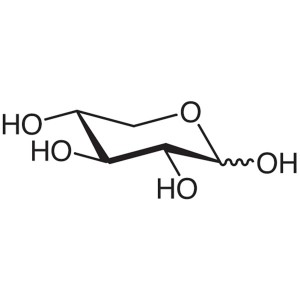
D-(+)-Xylose CAS 58-86-6 Purity >99.5% (HPLC) F...
-
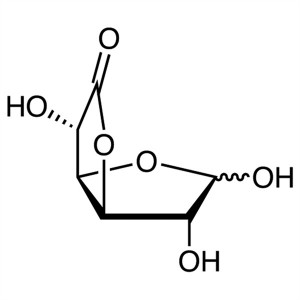
D-Glucuronolactone CAS 32449-92-6 Assay 98.5%~1...
-
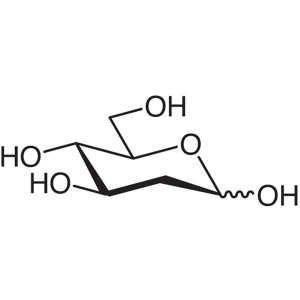
2-Deoxy-D-Glucose CAS 154-17-6 Assay >98.5% (HP...
-
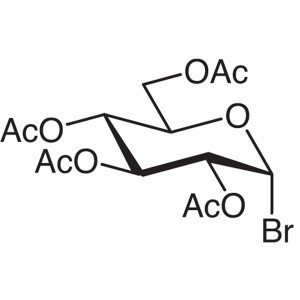
Acetobromo-α-D-Glucose CAS 572-09-8 Purity >99....
-
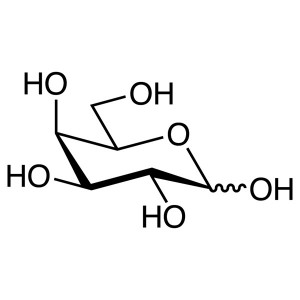
D-(+)-Galactose Anhydrous CAS 59-23-4 Assay >98...
-
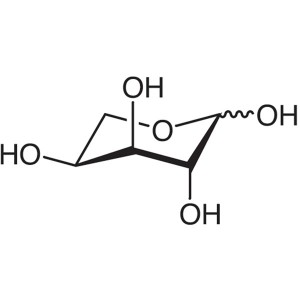
L-(+)-Arabinose CAS 5328-37-0 ; 87-72-9 Assay >...
-
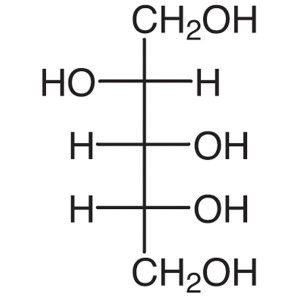
D-(+)-Arabitol CAS 488-82-4 Assay >99.0% (HPLC)...

